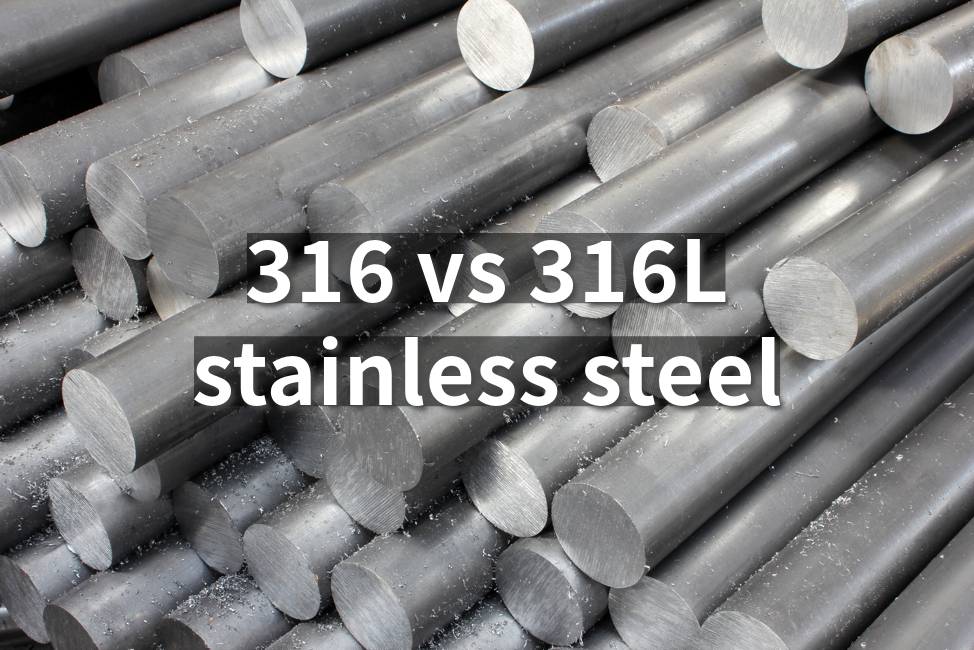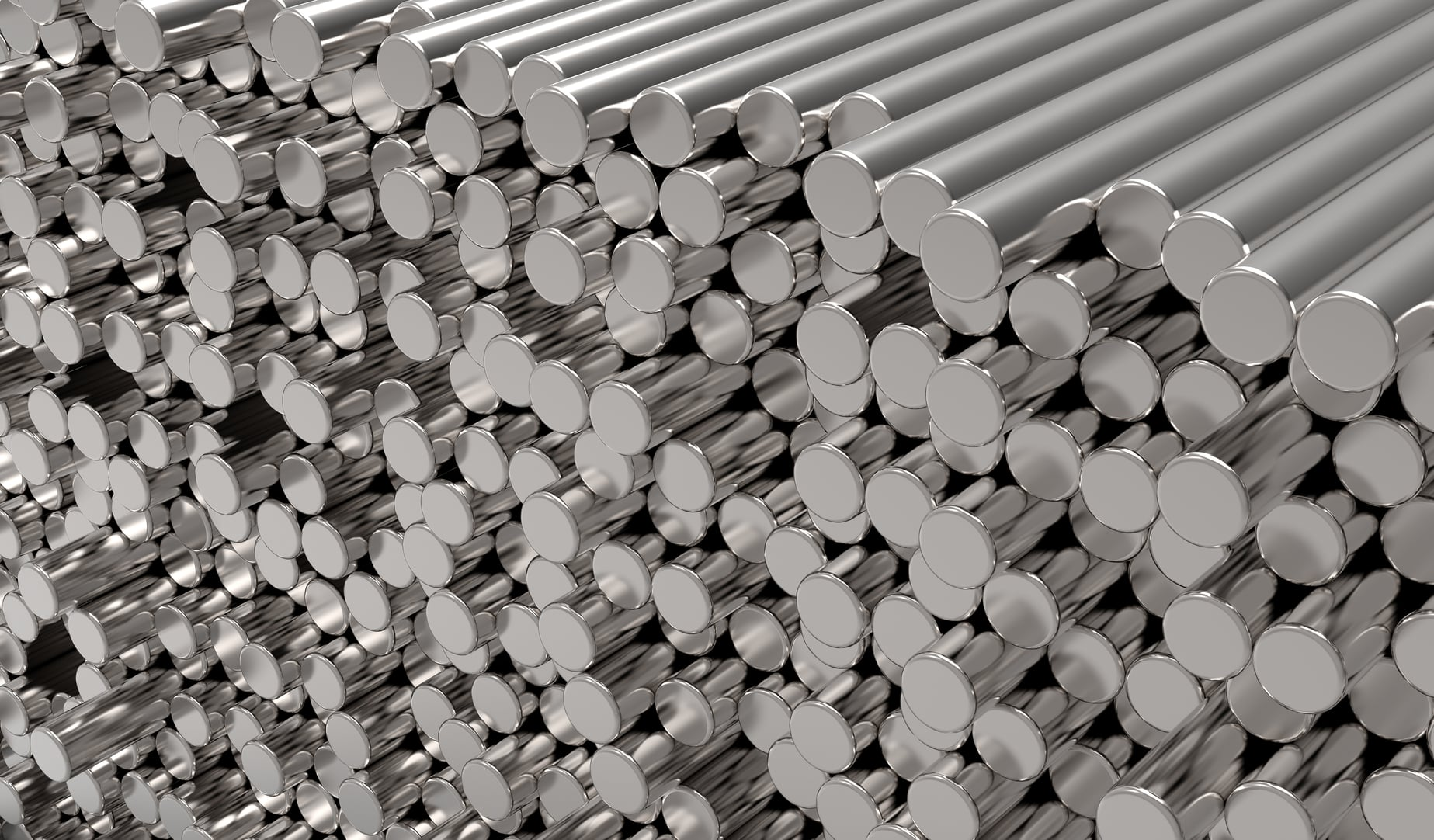316 vs 316L Stainless Steel: Which Should You Use?

Discover the differences between 316 and 316L stainless steel and learn about which one is best suited for your needs
Introduction
There are over 150 grades of stainless steel, each with its own chemical composition and properties. The two most common types are 316 and 316L.
While both contain chromium and other elements for corrosion resistance, they have some differences that are important to understand when selecting which one to use for a project.
What is 316 Stainless Steel?

Composition and properties
316 stainless steel contains approximately 16-18% chromium, 10-14% nickel, 2-3% molybdenum, and 0.08% maximum carbon. The nickel and molybdenum give it improved corrosion resistance compared to 304 stainless steel, which only contains 8-10.5% nickel.
Some key properties of 316 stainless steel include:
Excellent corrosion resistance: The molybdenum allows it to withstand corrosion from chlorides and other chemicals better than 304 steel.
Higher strength: The addition of nickel and molybdenum increases the steel's strength and durability.
Heat resistant: Suitable for applications up to 2000°F.
Non-magnetic: Does not attract magnets like carbon steel.
Pros and Cons of 316 Stainless Steel
While 316 stainless has good all-around resistance, it can be susceptible to corrosion in extremely corrosive environments like acids or areas with heavy saltwater exposure.
It also has a higher cost than other grades due to its specialized chemical composition.
What is 316L Stainless Steel?

316L:Composition and properties
316L stainless steel has a nearly identical composition to 316 stainless steel, with 16-18% chromium, 10-14% nickel, and 2-3% molybdenum. The main difference is that 316L contains slightly less carbon, at a maximum of 0.03% rather than 0.08%.
Some key characteristics of 316L include:
Very high corrosion resistance, on par with 316 steel. The low carbon content does not significantly impact this property.
Lower strength than 316 steel but increased workability. The lower carbon makes it easier to machine, bend, weld and form.
Similar heat resistance to 316, also suitable for applications up to 2000°F.
Non-magnetic, like regular 316 stainless.
316L: Pros and Cons
The advantages of 316L are its improved formability during manufacturing and its resistance to corrosion due to pitting and crevice corrosion. It may be better suited than 316 for applications involving welding or complex shaping.
However, its strength is slightly lower. It also has a lesser resistance to stress corrosion cracking compared to 316 stainless.
Overall, 316L offers better workability at the cost of some loss in mechanical properties.

316 vs. 316L Stainless Steel
Chemical Composition
316 stainless has a maximum carbon limit of 0.08%, whereas 316L contains only up to 0.03% carbon. This slight difference has important impacts on the mechanical properties of the two alloys.
Mechanical Properties
With higher carbon levels, 316 stainless steel achieves better strength and resistance to stress corrosion cracking when compared to 316L.
Weldability and fabrication
Higher carbon levels also makes it harder to machine, weld, and form due to reductions in ductility.
Property | 316 Stainless Steel | 316L Stainless Steel |
|---|---|---|
Carbon Content | Maximum 0.08% | Maximum 0.03% |
Strength | Higher strength | Slightly lower strength |
Workability | Good workability | Improved workability, more ductile |
Machinability | Can be machined | Easier to machine |
Weldability | Can be welded | Better weldability, less prone to cracking |
Stress Corrosion Resistance | Better resistance | Slightly less resistant |
Fabrication | Can be formed | Easier to form complex shapes |
Applications and Use Cases
316 Stainless Steel Typical Applications

High strength structural components like brackets, plates and fasteners
Heat exchangers and reactors handling hot/corrosive chemicals
Pipes and equipment for seawater desalination plants
Pressure vessels and piping requiring high stress resistance
316L Stainless Steel Typical Applications

Complex shaped parts made through bending/forming like ductwork
Items frequently welded or joined through soldering
Thin walled tanks and containers for food/beverage industries
Medical/dental/pharmaceutical applications involving machining
Choose the Right Stainless Steel
Key factors to consider
Strength requirements - 316 is better if high loads/stresses are involved.
Fabrication needs - 316L excels if welding, bending or precision machining is required.
Corrosive environment - Both grades offer superb corrosion resistance in most conditions.
Cost sensitivities - 316L may be more economical for complex components.
Some Tips
Evaluate your design and intended uses to understand needs.
Consult fabrication experts on what material works best for your manufacturing techniques.
If equal on performance, 316L is often more affordable due to its improved workability.
Consider lifetime maintenance costs over initial material price for demands like welding repairs.
316 may provide better long term value in severely corrosive settings through higher durability.
Conclusion
In summary, 316 and 316L are both widely used grades of stainless steel that offer great corrosion resistance. The main differences are that 316 provides higher strength properties while 316L has improved workability for fabrication.
With proper material selection, both 316 and 316L can reliably serve a very wide range of corrosion-resistant applications and industries.
Get Expert Support from Unionfab
With extensive experience in stainless steel for both 3D printing and CNC machining, we can help you choose the ideal alloy for durable, low-maintenance parts.
Contact Unionfab today to see how our advanced technologies can bring your design to life!

